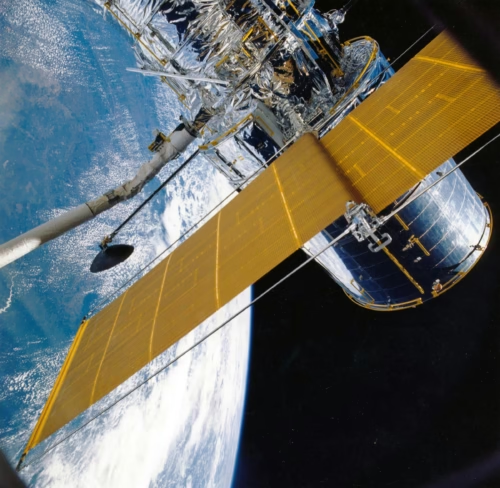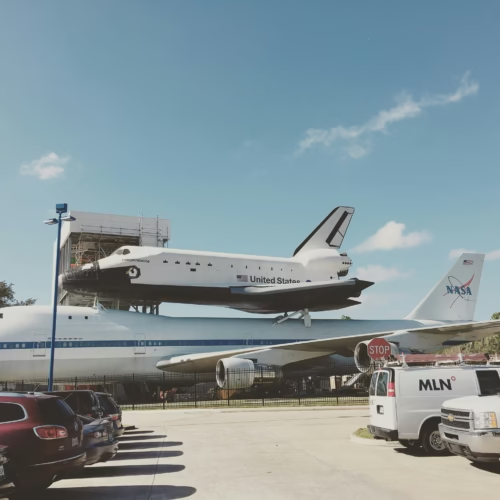Have you ever wondered how massive exoplanets collide in the cosmos and what these collisions reveal about our universe? As you sit under the vast night sky, peering into the celestial wonders, the awe-inspiring work of space exploration shines brightly through NASA’s official website. Operating as a gateway to the stars, NASA’s domain offers insights into groundbreaking discoveries, like the recent detection of a glowing cloud pointing to a cosmic collision of two giant exoplanets. Such discoveries help unravel the mysteries of planetary formation and the intricate dance of celestial bodies.
Table of Contents
NASA’s Official Website: A Celestial Gateway
NASA’s official website serves as the National Aeronautics and Space Administration’s digital portal, offering a plethora of up-to-date information, research, and educational resources for any astronomy enthusiast or professional. From mission details to the latest space exploration news, the website provides comprehensive insights into NASA’s endeavors, embodying a bridge between Earth and the universe.
Historical Context: Unveiling Cosmic Collisions
The history of planetary collisions is as old as the universe itself. Evidence of these cosmic interactions not only exists within distant galaxies but has also been uncovered in our solar system. These celestial events shed light on the processes of planetary evolution, contributing to a holistic understanding of the cosmos.
Clementine Mission: Redefining Lunar Insights
In 1994, the Clementine mission marked a pivotal moment in lunar research, dramatically altering our understanding of the Moon. Initially designed to test lightweight components and sensor performance, Clementine quickly transitioned into a scientific powerhouse. Despite technical challenges, it provided the first global multispectral and topographic maps of the Moon and revealed the significant presence of water ice in perpetually shadowed craters. This mission exemplifies how technology demonstration missions can yield profound scientific outcomes, reshaping our perception of lunar history and evolution.

A Recent Exploration: Exoplanetary Collisions
A remarkable sighting of a glowing cloud has captured the attention of astronomers across the globe. This luminosity is attributed to a collision between two exoplanets, offering valuable insights into these cosmic occurrences’ underlying mechanisms and implications.
The Phenomenon Explained: Infrared Luminosity Spike
Scientists observed an intriguing event involving a young Sun-like star that exhibited a sudden rise in infrared brightness, succeeded by an eclipse lasting approximately 500 days. The explanation for this phenomenon lies in a colossal cloud of gas and dust, presumed to result from the collision of two giant exoplanets. As the exoplanets collided, they were completely liquified, leaving behind a molten core and a cloud of gas and debris.
Investigative Missions: From WISE to the James Webb Space Telescope
The discovery was made possible through data from NASA’s retired Wide-field Infrared Survey Explorer (WISE) mission. However, the quest for understanding does not stop there. Plans are in motion to observe this unique system with the James Webb Space Telescope, aiming to further uncover the mysteries behind these cosmic smashes.
Broadening Perspectives: A Multi-Faceted Analysis
Understanding different perspectives and approaches to studying cosmic events like exoplanetary collisions is crucial. Below is a comparison of different missions and their contributions to our cosmic knowledge:
| Mission Name | Objective | Key Contribution |
|---|---|---|
| WISE | Survey infrared wavelengths | Discovered glowing cloud pointing to cosmic collisions |
| Clementine | Test lightweight components | Produced first comprehensive maps and discovered water ice on the Moon |
| James Webb Telescope | Advanced space observations | Plans to observe cosmic collisions, enhancing understanding of exoplanets |

Impact of Discoveries on Scientific Understanding
The impact of space discoveries extends beyond academic circles, influencing technological advancements, inspiring new research methodologies, and sparking philosophical debates about our place in the universe. Highlighting the influence of planetary collisions helps us grasp the intricate patterns of celestial mechanics and synthesis of planetary systems.
Future Directions: What Lies Ahead
Looking towards the future, the study of cosmic collisions appears promising, with continuous advancements in technology enabling deeper insights into planetary evolution. These predictions envision an era where space exploration transcends current limitations, probing further into the mysteries of the universe.
Implications for Society and Science
The implications of studying cosmic collisions are numerous, from enhancing educational curricula to inspiring the next generation of scientists. These learnings emphasize the significance of ongoing research and the shared quest for knowledge that transcends national and personal boundaries.

Conclusion
In conclusion, the NASA official website remains an invaluable resource, offering unparalleled access to the universe’s wonders. With evidence of groundbreaking discoveries such as exoplanetary collisions, our grasp of cosmic processes grows richer and more intricate. The synthesis of current missions and research underscores a continued commitment to exploring the unknown. As our understanding of the universe expands, the question remains: What other cosmic secrets lie waiting to be uncovered through the vast oeuvre of NASA’s explorations? Your exploration of space may just be beginning.

